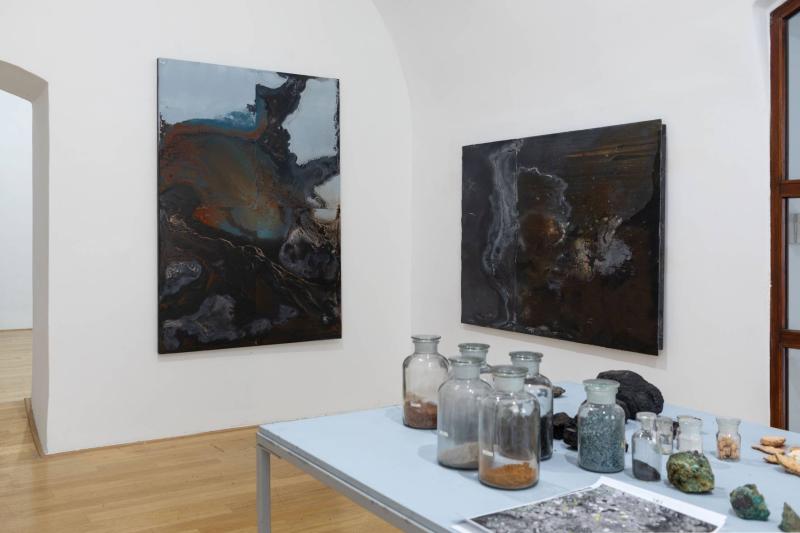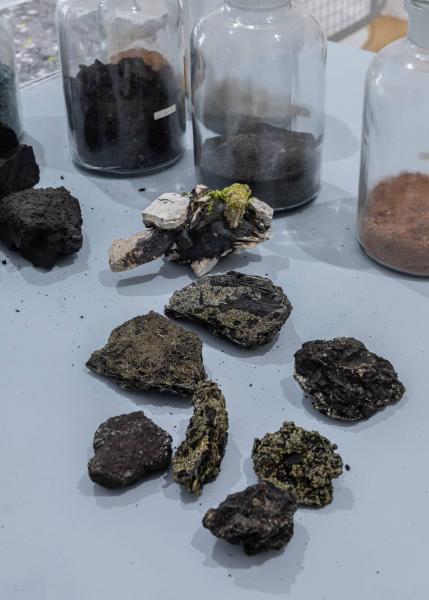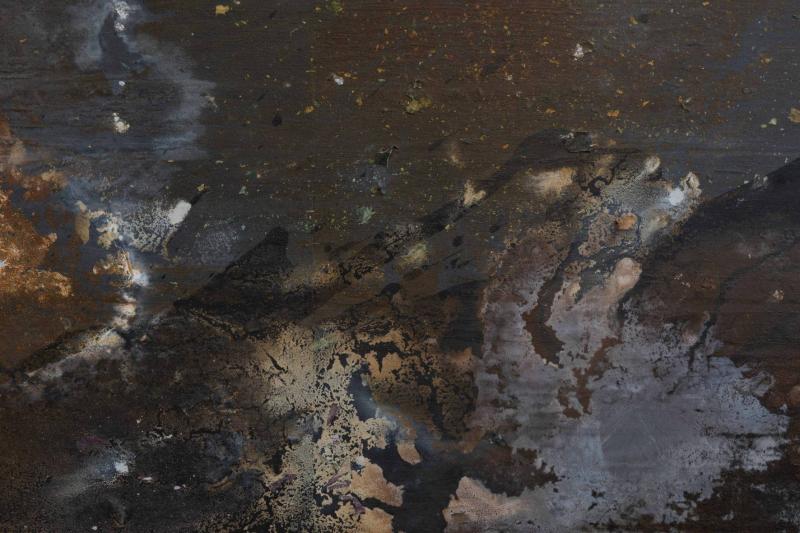In Dagmar Šubrtová's works we can observe two basic thematic lines that are vividly intertwined. One reflects on problematic issues of concrete reality, invites contextual thinking, encourages the expression of a value position and conscious action. The other, more contemplative, turns attention towards the realm of individual concentration and refinement of the perception of time, space and interdependence. The author often makes the meanings of her works visible through mental or emotional movement within a range defined by opposites, emphasizing especially the moment of their interface as a space of awareness, new experience and as an opportunity for inner transformation.
The metaphor of events carried by the polarity of extreme states can be found in many of her works in various forms. It can be the expressive contrast of the blackness of the charcoal and the whiteness of the plaster, or the delicate hand embroidery of star constellations on velvet and the geometry of the shapes it covers. Dagmar Šubrtová sees the distant cosmic dimension as a statement about the space of her own inner world – in the darkness of the underground cave she finds a celestial vault. At the same time, she contemplates the fact of falling cosmic dust, which is permanently integrated into the Earth's surface. She reflects on the transformation of the original black crystallinity brought up from underground into the white formlessness rising upwards. She creates a cycle inspired by the Icelandic phenomenon of the summer solstice, and subsequently completes it with a set symbolically depicting the lunar surface. Even in such a brief overview, a common inner quality repeatedly emerges: the continuity of change.
The materials that the artist has been working with for a long time – coal, slag, ash – are themselves ideal symbols of transformation of the material. She points to the transformation of the landscape due to destructive human interventions and its subsequent regenerative processes. In her visual compositions, she simulates the chemical transformations herself – she mixes substances that have undergone an industrial heat process with paint and leaves them to subsequent self-reactions. Therefore, it is not surprising that she sees a certain affinity between her own themes and the work of Anselm Kiefer, who has spent his lifetime as an artist dealing with destructive processes and layers of human or collective memory. He, too, is also drawn to difficult themes. Dagmar Šubrtová's object Starry Sky in a Cave (Orion Constellation) is a paraphrase of his 1997 painting Die berühmten Orden der Nacht, with the meaning focusing on the fascination with ideas stored in the oldest layers of human consciousness. Anselm Kiefer naturally connects the world of art with the space of natural sciences, history and politics. He is captivated by the material, by the "spirit" of the material he makes visible. In his creative process, he often uses the effects of natural elements and chemical reactions. He refers to problematic moments in history caused by man. He associates the destroyed form not with the meaning of absolute destruction, but with the idea of hope, of opening up to the future. He sees art as something unstable, permanently changing. It is appropriate to recall a statement by the geologist Radek Mikuláš from the commentary on Dagmar Šubrtová's unforgettable visit to the mining area around Rosia Poieni in Romania, where only the visible tip of a church tower bears witness to the existence of the former village of Geamana, built in a valley later flooded by toxic sludge: "Even 'poisons' belong to nature" (from the catalogue of the exhibition Stella Maris, 2020). A similar – seemingly paradoxical – moment may be the subsequent increase in biodiversity in industrially devastated areas, the so-called 'new wilderness'.
Dagmar Šubrtová is aware of the complexity of the structures of the environment of which we are a part. Through her artistic work, as well as numerous curatorial activities, organization of lectures and the current interconnecting of various professional spheres, she permanently creates opportunities for an individual opening of sensitivity towards our own inner space, and therefore also towards what surrounds us. Her life and artistic philosophy are confirmed by the latest thoughts of the German biologist and philosopher Andreas Weber, articulated, for example, in his latest book The Biology of Wonder (2016). He calls his view of the nature as a whole „poetic ecology“, basing it on the Discovery of subjectivity as a fundamental principle in all of nature. He perceives feeling as a necessary dimension of the existential reality of organisms. From such a conception, a new ecological ethics emerges: he declares that we should not protect nature because of its utility or intrinsic value, but primarily because we are part of other beings and they are part of us. "Human beings can only fully understand their inner selves only after they understand their existence as the existence of cultural beings, who are existentially tied to the symbolic processes active in nature." Life as a value that has taken on physical form, as a self-organizing cooperative complexity, as an evolved feeling.





